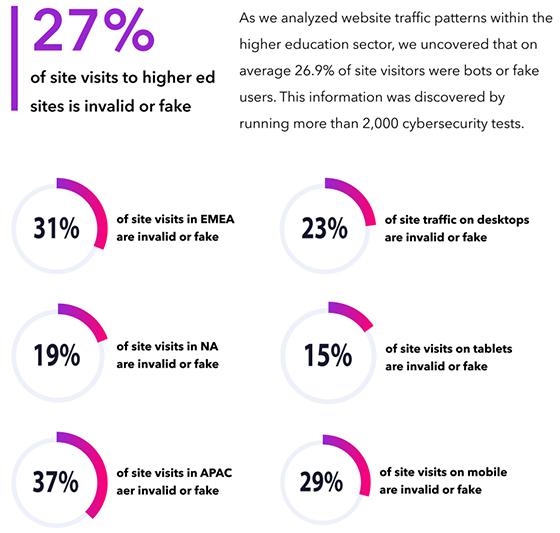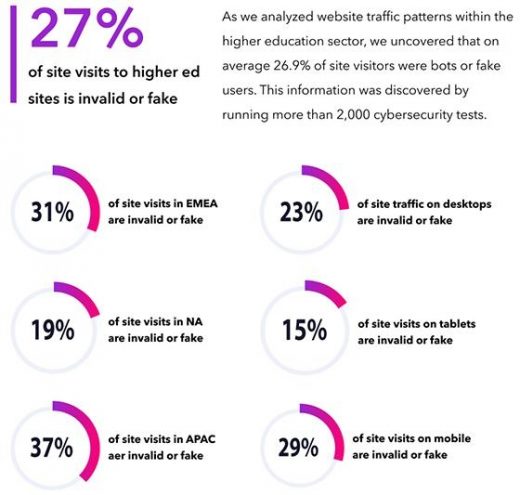Higher-Education Marketers Lose $94.6M In Annual Ad Spend To Invalid Paid Clicks
Higher-Education Marketers Lose $94.6M In Annual Ad Spend To Invalid Paid Clicks

CHEQ examined the prevalence of fraud in higher-education marketing and found one in four college applications submitted online are likely fake.
More than 3 million college applications are likely filled out each year by bots and fake users, not actual students — which is about 28% of the National Center for Education Statistics’ annual estimate. This information was discovered by running more than 2,000 cybersecurity tests.
The company analyzed website traffic patterns in the higher-education sector and also found:
- 31% of site visits in EMEA are invalid or fake
- 19% of site visits in North America are invalid or fake
- 37% of site visits in Asia-Pacific are invalid or fake
- 23% of site traffic on desktops are invalid or fake
- 15% of site visits on tablets are invalid or fake
- 29% of site visits on mobile are invalid or fake
Despite the potential for fraud, The U.S. Department of Education on Tuesday proposed a way to reduce the cost of federal student loan payments, especially for low and middle-income borrowers.
The proposed regulations would create an income-driven repayment (IDR) plan and eliminate common pitfalls that have historically delayed borrowers’ progress toward forgiveness, according to the department.
Since 27% of visits to higher-education websites were invalid or fake, CHEQ estimates higher education marketers lose $94.6 million in annual advertising spend to invalid paid-advertising clicks, and 2.5 billion fake visits flood higher-ed websites each year.
Colleges and universities collectively spend $2.2 billion in advertising annually, according to the Washington Post, with a stat quoted by CHEQ that published about a year ago.
The issues caused by the “fake web” are not exclusive to paid marketing and advertising. The CHEQ team typically sees slightly higher rates of fake traffic from organic and direct sources compared with paid traffic sources.
When fake traffic arrives on a website, regardless of the source, it can lead to skewed metrics and inefficiencies. CHEQ also cited numbers from Niche that estimate the average higher-education website experiences 1.38 million website visits each year.
Niche 7,000 registered .edu sites. CHEQ analysis revealed that about approximately 2.5 billion of these website visits are coming from bots and fake users.
(18)


